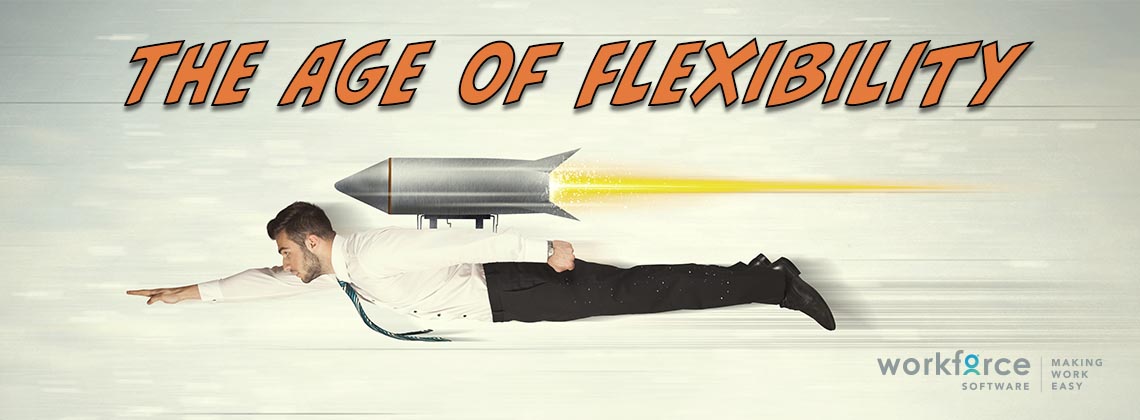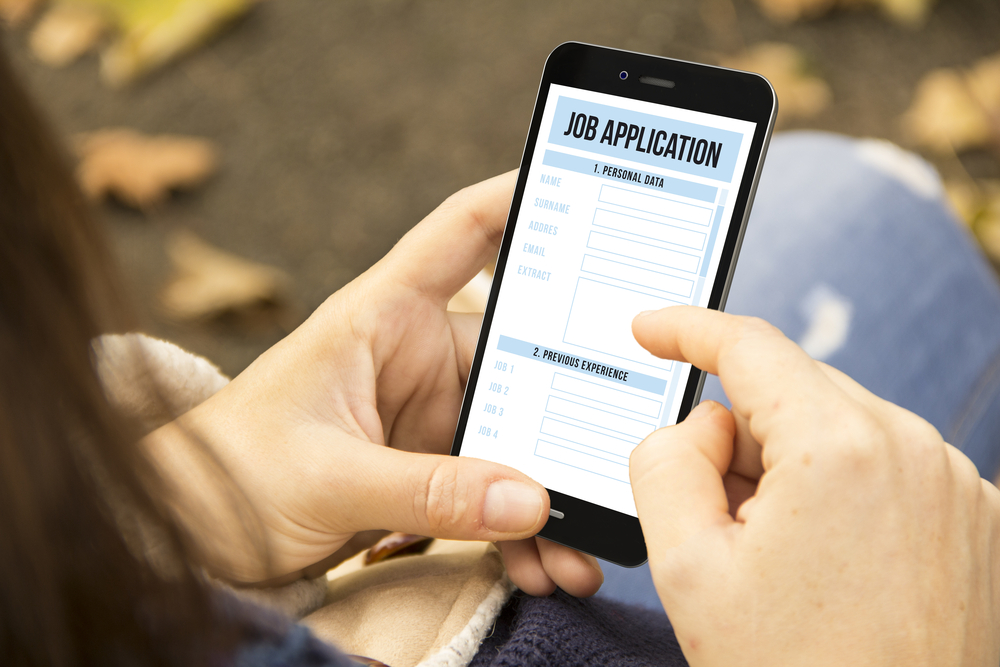The Age of Flexibility


Geoff Yates
Product Development
The gig economy is growing fast. The EU recently approved legislation to protect people working in this sector, and all member states must comply within three years. The UK responded quickly by introducing similar legislation that comes into effect from April next year (2020).
The term Contingent Worker is being used to identify and group together gig economy workers and in fact everyone who doesn’t have a contract or ongoing arrangement with an employer. Only those who are truly self-employed fall outside of the definition and the legislation.
Contingency Theory
Contingency Theory is a long-established business leadership concept. It says there’s no ‘one right way’, because it all depends on the situation. Contingency theory says that as leaders, we need to think afresh in the moment and decide the best next step.
As contingency-minded leaders, we apply our own style to get the best from our teams, creating the flexible working structures that can benefit everyone.
Whether contingency-minded or not, everyone appreciates that businesses thrive when they satisfy a real need and can do so efficiently. Delivering efficiently needs ‘the right people’ to work effectively (right place and time).
‘The right people’ are the ones who have the skills and the team mindset to drive efficiencies.
Contingent Workers
Can contingent workers be ‘the right people’?
Yes, just like contingency-minded leaders, they are responsive to change and understand the importance of teamwork and applying their skills wherever they go.
Working flexibly as a casual or freelancer is nothing new, what is new is that the means for finding the next job got much easier.
Contingency for all!
Shall we all become more contingency-minded? It wouldn’t be such a bad idea. Developing our skills and adaptability puts us in demand and ready for new challenges wherever they arise.
The downside for businesses is higher staff turnover. Successful leaders want to retain the best people, they want loyalty from their core team and for that same loyalty ethos to flow along the chain of command. That loyalty helps to grow a stable organization.

It’s so fast
Despite the speed of change in the internet age it still takes time to build and grow a business. Sustained navigation of the choppy seas of economic fluctuations, of rapidly changing technologies, is the test that sees businesses thrive or fail.
To thrive in the age of super-fast change we still need stability. It’s not a rigid stability that’s needed, but a stability that’s balancing and responsive to change.
 Workforce Management for the HR Leader’s Soul
Workforce Management for the HR Leader’s Soul
This book will help you create a healthy, rewarding environment for the people that keep your company moving forward.
Get ‘em and keep ‘em as long as you need ‘em
Things are changing so fast that the skills shortage, the lack of knowledge and adaptability in the workforce, at all levels, is killing innovation. The ‘right people’ either don’t exist yet or they’re out there but working for somebody else.
Let’s face it, there’s lots of people out there who want to be successful. People who have the right attitude, knowledge and skills they can adapt to help your business be successful. If you can find them and get them, then you really want to keep them for as long as you need them.
Are ‘contingent workers’ part of your workforce? How well do you know what these self-driven, adaptable and flexible people are capable of?
Many organizations that utilize Contingent Workers are still learning how to do it well, or at least how to not do it badly. Many are struggling with the challenges and missing the opportunities that this type of worker can bring.
Make a Difference
How do we attract and retain the right people? What do workers want? What does anybody want?
“The purpose of life is not to be happy. It is to be useful, to be honorable, to be compassionate, to have it make some difference that you have lived and lived well.”
― Ralph Waldo Emerson
“No work is insignificant. All labor that uplifts humanity has dignity and importance and should be undertaken with painstaking excellence.”
― Martin Luther King Jr.
And so, it’s easy, be the difference only you can be, help others to do the same, then we will all be working together to uplift all our lives.
The aspiration to make a difference, the desire for belonging and the want to give and receive loyalty is a fundamental human need. But some contingent workers and some employees have been burnt. They feel their loyalty has been betrayed, or their belonging denied, and so for personal protection they distance themselves. These people are the disconnected workers and they join the unengaged workers who’ve yet to be given the chance to make a difference.
Belonging
New communication technologies have enabled the concept of the connected workforce. But have we really grasped the concept? To make it work for us we must reach out to all the people that power our businesses. We need to open our communications and build that sense of belonging.
By whatever means our people come to us, however we employ them, if we fail to show them that they’re important, if we fail to give them an opportunity to make a difference, if we fail to appreciate their efforts and help them to grow with us, we fail. What’s more, we’ll fail faster than ever before. They will leave us, because it just got easier to.
Communication
The ‘contingent workforce’ is further removed from belonging than our own employees. The contingent worker’s investment in us is transient, as ours is in them. But that’s okay, as long as we’re all clear in our expectations.
Clarity and consistency in our communication about what we need increases the probability that we’ll achieve it. Whether someone is with us briefly or for the long haul, let’s make sure we connect and keep talking so that we all work together.
Connecting with our workforce builds engagement and creates opportunities for growth and innovation. We may find that learning to communicate with our contingent workforce helps us communicate better with all employees.

Connected Workforce
The connected workforce communication space is multi-layered.
- The corporate marketing level tells everyone what we want them to hear.
- The HR level connects everyone to HR resources.
- The planning and delivery level.
- The chat level, where operational information sharing happens.
The top two, the corporate and the HR levels are mostly information push. The chat level is a lively space where groups can continuously interact.
The third is a level that shares our short to medium term planned activities. This space is where the results of project planning and schedules of work are found. Traditionally, information was pushed from here, but that’s changing.
Calendars
Organizing our lives with our online calendars is something almost everyone does. They’ve become essential for gluing our social lives together, helping us track every event.
The work we do may provide our most fixed routine. Being at the same place at the same times is the work life for many in traditional jobs. This pattern is declining, and flexibility is on the rise.
If your work life is flexible, your personal calendar must contain your schedule of work along with everything else you’ll be doing. With the WorkForce Scheduling app, your work schedule can be shared with your calendars so you can see where to be and what you’ll be working on.
However, that’s not the whole story. There are some things that don’t belong in your main calendar. When you use the WorkForce Scheduling app it will help you answer other questions like;
- Who am I working with, where, when and on what are they working? (team dynamics)
- What options do I have for changes? (swaps, rejections)
- What work opportunities are available? (planning, optional shifts)
Predictability
However flexible we aim to be, we need predictability, a clear statement of intent. The new legislation insists on transparency and the provision of information to workers. The laws say there must be a minimum level of predictability; referenced around the predetermined number of working hours and days.
The laws also state that Contingent workers have the right to refuse, without punitive consequence, an assignment outside of the predetermined agreement. And, if an agreed assignment is cancelled without sufficient notice, compensation for lost earnings is due.
It’s all fair and reasonable stuff, ensuring everyone is awarded the respect they’re due.
Collaboration
Increasingly, the trend is for more collaboration in work planning. This includes collaborative scheduling; a powerful means of involving workers in decision making.
There’s no more powerful way of engaging someone’s interest than by giving them responsibility.
Collaborative scheduling requires people to express their preferences and to cooperate with their team in creating a joint schedule. When they do this, they cannot help but appreciate the contribution they’re making.
The power to change
For us all to become more contingency-minded, we need current information and the ability to respond. We need to ensure our workforce can work with that ideal and be able to act on it.
Technology is a great enabler, it helps us achieve more than we could before. Each advance allows us to think anew, to open new doors of possibility.
WorkForce Software has all the tools necessary to make the job of going to work easier in the age of flexibility.
Subscribe to The WorkForce Blog
Learn the art and science of maintaining productive, happy, engaged employees.
More Awesome Content!
Embedding an ‘Eyes Wide Open’ Mindset Into HR Technology Selection
Gartner guides teams responsible for deciding on their organization’s next HR technology investment to set themselves up for success.
5 Workforce Management Secrets to Thrive in 2021 and Beyond
Download this eBook to learn the 5 secrets that will help your organization shift from surviving to thriving now and in the future and learn how the right workforce management solution can empower your initiatives.
How Next-Gen Time Management Supports System of Record Compliance
Businesses must evaluate their time tracking solutions to ensure the solution meets compliance and efficiency needs.

 Workforce Management for the HR Leader’s Soul
Workforce Management for the HR Leader’s Soul

